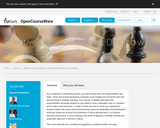
How to sell more faster with Sales Process Engineering
Short Description:
How to sell more faster with Sales Process Engineering
Long Description:
The Dolphin and the Cow?
Somehow, a memorable metaphor always seems to help me remember core concepts. For better or for worse, I assume that most readers of this book will agree.
The “sales” dolphin shown here represents the traditional, first-rate selling professional – graceful, effortlessly quick, a thing of beauty to watch! But, as we all know, the world has changed and the pace of that change continues to accelerate. We are all too familiar with how the “dot.com” boom become a “dot.bomb,” but not before it permanently and profoundly altered the business world.
The industrial sector has been contracting and will continue to shrink as a percentage of GDP. According to a recent study by Alliance Capital Management, factory employment in the U.S. declined 11% from 1995 to 2002. Most of us are just beginning to realize, however, that something more is happening. That same study also points out a 20% decline in Brazil, a 16% decline in Japan and a 15% decline in China. So I guess our jobs really aren’t just being exported overseas… Something even more fundamental must be going on.
The point here (and the point of this entire book) is that the “sales dolphin” can no longer swim alone. A new and different sort of help is needed. Things like metrics, statistical analysis and control and Sales Process Engineering or “SPE” are becoming more and more essential.
In the 19th century, these disciplines were applied to agriculture. That is why we no longer need 80% of the population to grow food. Since the 1940s, manufacturing executives have been applying them. That is why factory employment is dropping dramatically world-wide. Sales executives are next.
Teaching the “SPE Cows” to swim with the “Sales Dolphins” will become the competitive differentiator for a sales force. Read on. I trust that what follows will help.
Word Count: 13157
(Note: This resource's metadata has been created automatically as part of a bulk import process by reformatting and/or combining the information that the author initially provided. As a result, there may be errors in formatting.)
- Subject:
- Business and Communication
- Material Type:
- Textbook
- Date Added:
- 01/01/2004











